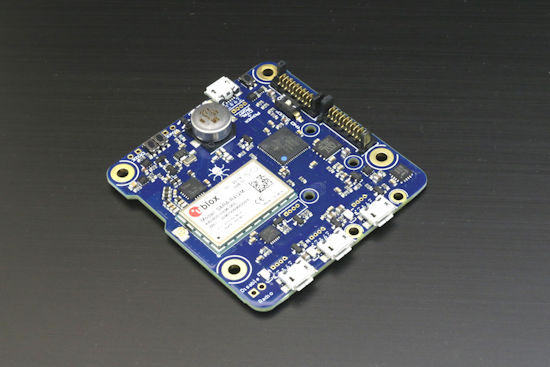![]() For several years, we have been offering different YoctoHubs to connect Yoctopuce sensors directly to the network, without using a computer. But as you may have noticed, on this product range, we don't throw ourselves headlong into cutting-edge technologies, especially when standards are split: LoRa, Sigfox, LTE-M, NB-IoT, 5G... With the multiplication of networks aimed at the IoT, we had to wait for the landscape to become clearer, because we couldn't do it all and we had to choose the solution which would best suit our customers. But there it is, we finally made our choice, and it's almost ready.
For several years, we have been offering different YoctoHubs to connect Yoctopuce sensors directly to the network, without using a computer. But as you may have noticed, on this product range, we don't throw ourselves headlong into cutting-edge technologies, especially when standards are split: LoRa, Sigfox, LTE-M, NB-IoT, 5G... With the multiplication of networks aimed at the IoT, we had to wait for the landscape to become clearer, because we couldn't do it all and we had to choose the solution which would best suit our customers. But there it is, we finally made our choice, and it's almost ready.
The new long-range YoctoHub is based on the LTE technology, on which the 4G and 5G networks are based. It supports the LTE-M (LTE Cat. M1) and NB-IoT (LTE Cat. NB1) standards. We selected these technologies because they are the easiest to implement for small and medium-sized enterprizes. Indeed, they don't require setting up any particular infrastructure, nor any complex contract with telecom providers: a simple SIM card covering these technologies is enough, as previously with 2G and 3G technologies.
The worldwide coverage for these networks is good, and the module allows you to accommodate frequency bands used in the different regions of the world. In the opposite to LoRa and Sigfox networks using unlicensed frequency bands, these LTE technologies have a certain guarantee of stability thanks to the fact that the bandwidth use is controlled by the providers. You thus avoid the risk of a lowering of the signal/noise ratio as and when other long-range networks deploy on the same frequency domain.

The new YoctoHub-GSM-4G
Apart from the technology which changes, the functions of the YoctoHub-GSM-4G are essentially the same as that of the YoctoHub-GSM-3G-EU and of the YoctoHub-GSM-3G-NA. These two products are thus going to be replaced by the new one, which we can even sell a bit cheaper than its predecessors. Moreover, it consumes somewhat less current, and when the coverage is good, it connects faster. The only disadvantage, if you are in a country where LTE-M coverage is not available, is that the NB-IoT bandwidth is lower than that of 3G. But for simple HTTP callbacks, this doesn't normally raise any issue. For less technologically advanced countries which have neither LTE-M nor NB-IoT, the module can connect to a 2G network (GPRS or EDGE) on the four most widely used frequency bands around the world.
Before we can sell this module more widely, we need some Beta-testers in different countries to make sure that it works elsewhere than home. So if you think that you'll need this module in the future, we make you the following offer:
- We sell you a new functional module for only 40 EUR, which is an 80% discount.
- You start testing the module in the next 1-2 weeks, to either confirm that it works well or to signal potential problems so that we can correct them with an update.
- If a hardware modification happens to be required to solve an issue, you'll receive a corrected version free of charge. Thus, at the end of the test period, you'll have a fully functional hardware.
Interesting, isn't it? So, contact us at support@yoctopuce.com to register for the Beta-test, telling us the region intended for the deployment, the type of network that you think you are going to use (NB-IoT or LTE-M), and if you already know which phone provider you are going to work with.
The offer is limited to one or two Beta-tests by network type and by country. This offer is on a first come, first serve basis!


